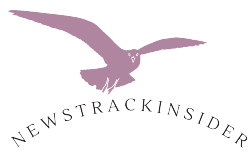Embarking on a construction project requires meticulous planning and consideration of various factors to ensure its success. Whether you are overseeing a residential renovation or managing a large-scale commercial development, understanding key aspects of construction management is crucial. This article outlines important considerations for navigating your next construction project, with a focus on crane leasing and aerial lifts rental.
1. Define Your Project Scope and Budget
The first step in any construction project is to clearly define its scope and budget. This involves outlining the objectives, timeline, and specific requirements of the project. A well-defined scope helps prevent scope creep and ensures that all stakeholders have a clear understanding of what the project entails. Additionally, establishing a realistic budget that covers all potential costs, including labor, materials, permits, and contingencies, is essential for financial control.
2. Select the Right Construction Team
Choosing the right construction team is a critical factor in the success of your project. This team typically includes a general contractor, architects, engineers, and various subcontractors. Conduct thorough research and vet potential candidates to ensure they have the necessary experience, qualifications, and a proven track record. Open communication and a clear contract outlining responsibilities and expectations will also contribute to a smoother project execution.
3. Compliance with Regulations and Permits
Adhering to local building codes and regulations is imperative for a successful construction project. Ensure that all necessary permits and licenses are obtained before commencing work. Compliance with regulations not only helps avoid legal issues but also ensures the safety and structural integrity of the construction.
4. Crane Leasing: A Key Component for Heavy Lifting
For large construction projects, crane leasing is often essential for handling heavy materials and equipment. Cranes offer the capability to lift and move large items efficiently, which is crucial for tasks such as assembling steel structures or transporting heavy machinery.
When considering crane leasing, evaluate the following factors:
- Type of Crane: Different types of cranes, such as tower cranes, mobile cranes, and crawler cranes, are suited for various tasks and project requirements. Select a crane that matches the specific needs of your project.
- Load Capacity: Ensure that the crane has the appropriate load capacity to handle the weights involved in your project. Overloading a crane can lead to safety hazards and equipment failure.
- Lease Duration: Determine the length of time you will need the crane and choose a leasing arrangement that aligns with your project schedule. This will help optimize costs and avoid unnecessary expenses.
- Maintenance and Safety: Confirm that the leasing company provides well-maintained equipment and adheres to safety standards. Proper maintenance and inspection are crucial for preventing accidents and ensuring smooth operations.
5. Aerial Lifts Rental: Enhancing Accessibility and Safety
Aerial lifts play a vital role in providing access to elevated areas on construction sites. Whether for installation, maintenance, or inspections, aerial lifts facilitate safe and efficient work at heights.
Key considerations for aerial lifts rental include:
- Type of Aerial Lift: Choose from various types of aerial lifts, such as scissor lifts, boom lifts, or telehandlers, based on the specific needs of your project. Each type offers different features and benefits suited to different tasks.
- Height and Reach: Assess the height and reach requirements for your project to select an aerial lift that provides adequate access. Ensure that the lift can reach all necessary areas without compromising safety.
- Safety Features: Verify that the rental company provides aerial lifts equipped with essential safety features, such as guardrails, non-slip platforms, and emergency stop buttons. Proper training for operators is also necessary to ensure safe use.
- Rental Terms: Review the rental terms, including the cost, duration, and any additional fees. Clear terms will help you manage your budget effectively and avoid unexpected expenses.
6. Project Management and Communication
Effective project management is crucial for keeping the construction project on track. Implement a project management plan that includes timelines, milestones, and regular progress reviews. Clear communication among team members, stakeholders, and suppliers is essential for addressing issues promptly and ensuring that all aspects of the project are coordinated.
7. Risk Management and Contingencies
Identify potential risks associated with your project and develop a risk management plan to mitigate them. This includes addressing safety hazards, environmental concerns, and potential delays. Having contingency plans in place will help you respond to unforeseen issues and minimize their impact on the project.
Conclusion
Navigating a construction project requires careful consideration of various factors, including defining the project scope, selecting the right team, and complying with regulations. Crane leasing and aerial lifts rental are crucial components for managing heavy lifting and accessing elevated areas, respectively. By addressing these considerations and planning effectively, you can enhance the success and efficiency of your construction project.
